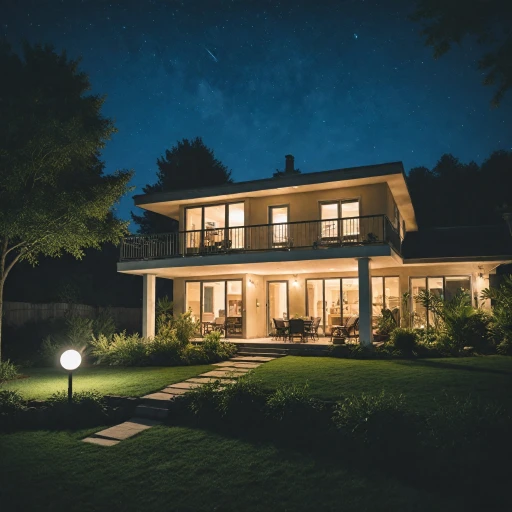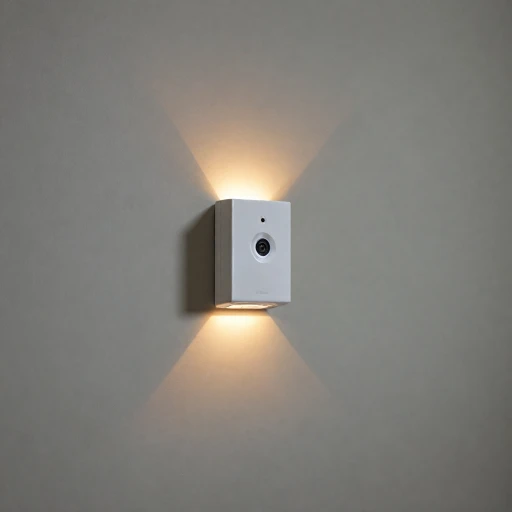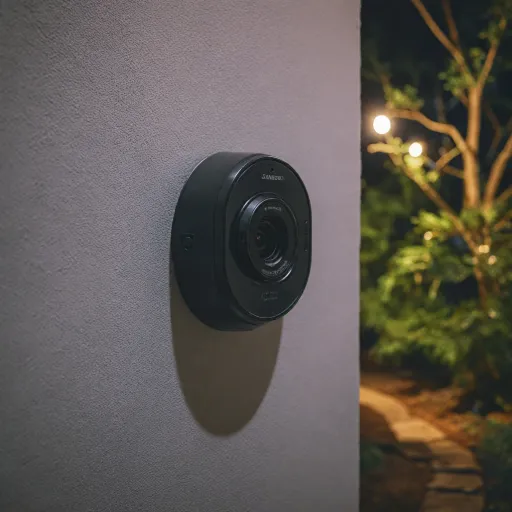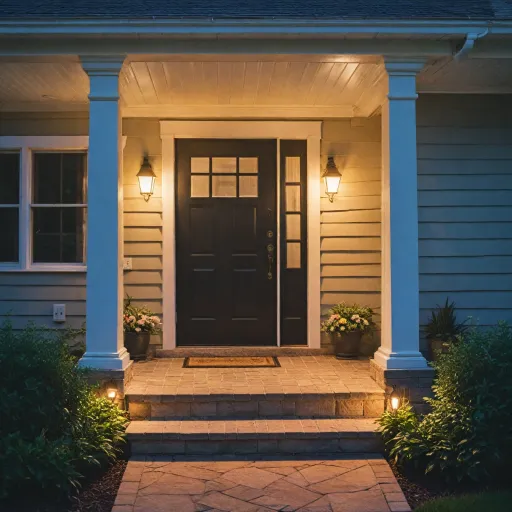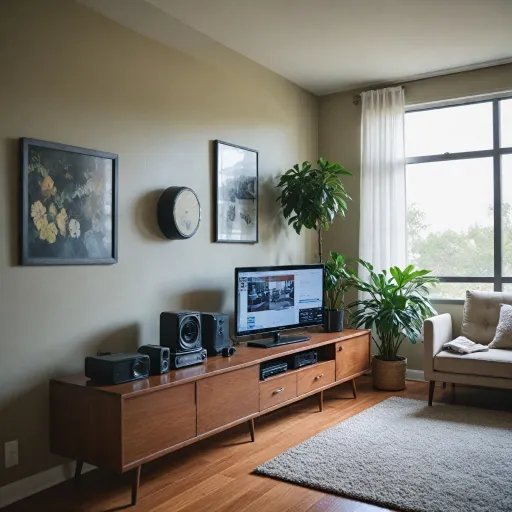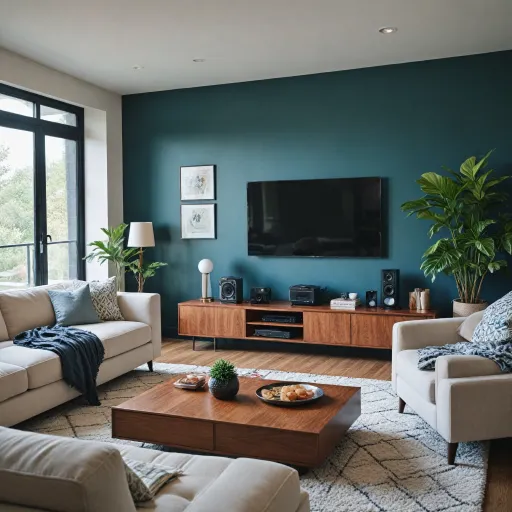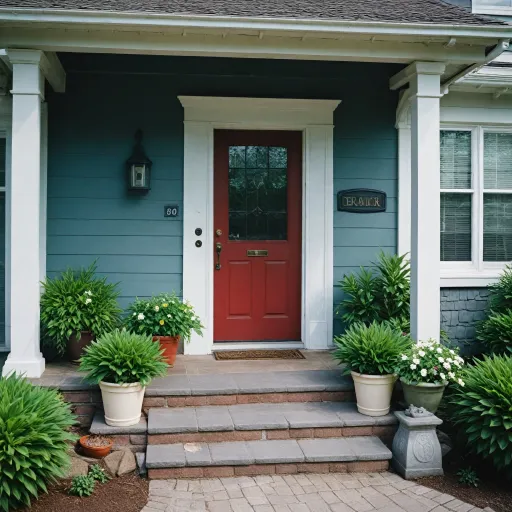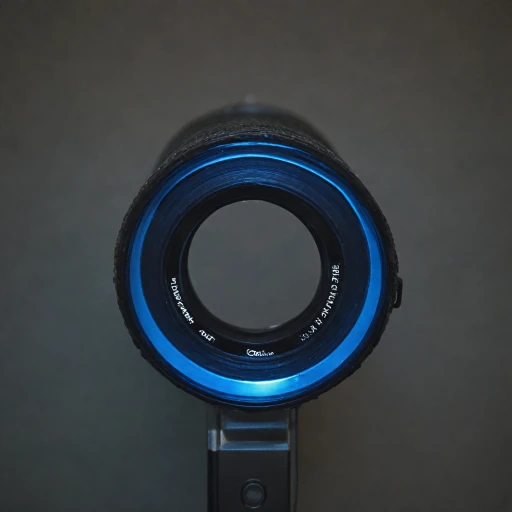
Understanding how a motion sensor camera works
How motion sensors and cameras work together
At the heart of a motion sensor camera is a combination of a camera and a motion detector. The motion sensor, often using infrared technology, constantly scans its field of view for movement. When it detects motion, it triggers the camera to start recording video or send real-time alerts to your phone or smart device. This process helps you monitor your property efficiently, saving battery and storage by only recording when activity is detected.
Key components and features to look for
- Motion Detection: The core feature, using motion sensors to identify movement and activate the camera.
- Night Vision: Infrared LEDs or color night vision allow the camera to capture clear video even in low light or complete darkness.
- Field of View: A wide field view ensures more area is covered, reducing blind spots.
- Battery Powered Options: Many sensor cameras are battery powered, making them easy to install in outdoor or hidden locations.
- Smart Integration: Compatibility with Alexa, Google, or other smart home systems lets you control and monitor your security cameras hands-free.
- Storage Options: Choose between local storage, cloud storage, or both, depending on your privacy and access needs.
- False Alerts Prevention: Advanced models use AI or dual band sensors to reduce false alarms from pets, weather, or passing cars.
Comparing motion sensor cameras with traditional security cameras
Unlike traditional security cameras that record continuously, motion sensor cameras only activate when motion is detected. This not only saves storage space and battery life but also makes it easier to review footage, since you only see moments when something happened. Some brands, like ADT, offer professional monitoring, while others focus on DIY setups with smart features and instant alerts. For a deeper look at how these systems can enhance your home security, check out this guide on enhancing home security with Ring camera and monitor systems.
Understanding the technology behind motion detection
Most sensor cameras use passive infrared (PIR) sensors to detect heat changes caused by moving objects. Some advanced models combine PIR with video analytics to improve accuracy and minimize false alerts. Features like motion activated recording, customizable detection zones, and hidden camera options give you more control over your security setup. Whether you need outdoor, indoor, or hidden solutions, understanding these basics will help you compare the best motion sensor cameras for your needs.
Key benefits of using a motion sensor camera at home
Why Motion Sensor Cameras Make a Difference
Adding a motion sensor camera to your home security setup can offer peace of mind and practical advantages. These cameras use motion detection technology to monitor activity and send instant alerts to your phone or smart device when movement is detected. This means you are always in the loop, whether you are at home or away.
- Real-time alerts: Motion activated cameras notify you immediately when they detect movement, helping you respond quickly to potential threats.
- Efficient monitoring: Instead of recording hours of uneventful footage, motion sensor cameras only capture video when activity occurs. This saves storage space and makes it easier to review important events.
- Deterrence: Visible security cameras, especially those with outdoor night vision and color night features, can discourage unwanted visitors. The presence of a camera with a motion detector often makes intruders think twice.
- Smart integration: Many sensor cameras work with Alexa, Google, and other smart home systems. You can connect your camera to other security devices for a more complete solution.
- Versatility: There are options for battery powered, dual band, and hidden cameras, so you can choose what fits your needs best. Some models offer local storage, while others use cloud storage for saving video clips.
- Night vision and field view: Modern security cameras offer night vision and wide field view, ensuring your property is monitored day and night. Some even provide color night vision for clearer details in low light.
- False alerts management: Advanced motion sensors can reduce false alarms by distinguishing between people, animals, and moving objects like trees.
When you compare different security cameras, consider features like motion detection sensitivity, battery life, video quality, and whether the camera supports local or cloud storage. For more details on the importance of reliable camera cords and how they impact your security setup, check out this guide on the importance of security camera cords.
Challenges and limitations of motion sensor cameras
Common Issues with Motion Detection
While a motion sensor camera can be a powerful addition to your home security, it’s important to understand the challenges that come with this technology. One of the most frequent issues is false alerts. Everyday movements like pets, passing cars, or even tree branches swaying in the wind can trigger the sensor, leading to unnecessary notifications. This can make it difficult to distinguish between real threats and harmless activity, especially if your camera’s motion detection settings are not properly adjusted.
Limitations in Night and Low-Light Conditions
Many modern security cameras offer night vision or even color night features, but performance can vary. Some cameras struggle to deliver clear video in complete darkness or during bad weather. If your camera relies on infrared (IR) lights, the quality of night vision can depend on the strength and placement of these lights. In some cases, outdoor lighting or additional IR illuminators may be needed to get the best results.
Power and Connectivity Concerns
- Battery powered sensor cameras offer flexibility, but require regular charging or battery replacement. If the battery runs out, your home security could be compromised.
- Wi-Fi connectivity is crucial for smart features and real-time alerts. However, weak signals or interference can cause delays or missed notifications. Cameras with dual band support (2.4 GHz and 5 GHz) can help, but placement and your home’s layout still matter.
Storage and Privacy Considerations
Deciding between cloud storage and local storage is another challenge. Cloud options offer convenience and remote access, but may require a subscription and raise privacy concerns. Local storage, like microSD cards, can save costs but may be vulnerable if the camera is stolen. Balancing these options is key for effective video management.
Field of View and Placement Limitations
The field view of your camera determines how much area it can monitor. Some sensor cameras have a narrow angle, which can leave blind spots. Others may offer a wide view but at the cost of image detail. Proper positioning is essential to maximize coverage and minimize missed events. Hidden camera placement can also be tricky, as it may reduce the effectiveness of motion sensors.
Integration and Compatibility Challenges
Not all motion sensor cameras work seamlessly with other smart home devices like alexa google or existing adt security systems. Compatibility issues can limit automation or make it harder to manage your security setup from a single app. Always compare features and check for integration support before making a decision.
Tips for choosing the right motion sensor camera
What to Look for When Comparing Motion Sensor Cameras
Choosing the right motion sensor camera for your home security can feel overwhelming with so many options available. To make an informed decision, it’s important to compare features and consider your specific needs. Here are some key factors to keep in mind:
- Motion Detection Accuracy: Look for cameras with advanced motion sensors that minimize false alerts from pets, weather, or passing cars. Some models offer customizable motion zones or sensitivity settings to help reduce false alarms.
- Video Quality and Night Vision: High-definition video is crucial for clear footage. Consider cameras with 1080p or higher resolution, and check for color night vision or infrared night vision features for better visibility in low light.
- Field of View: A wider field view allows your camera to cover more area. Compare the degrees of coverage—some outdoor security cameras offer up to 180° or even 360° views.
- Power Source: Decide between battery powered, wired, or plug-in options. Battery powered cameras offer flexible placement, but you’ll need to monitor battery life. Some sensor cameras also support dual band Wi-Fi for more reliable connectivity.
- Storage Options: Consider whether you prefer local storage (like microSD cards) or cloud storage for your video recordings. Some brands require a subscription for cloud storage, while others let you save footage locally.
- Smart Home Integration: If you use Alexa, Google Assistant, or other smart home systems, check for compatibility. Many security cameras now offer voice control and integration with other smart devices.
- Outdoor Durability: For outdoor cameras, weather resistance is essential. Look for models rated for rain, snow, and extreme temperatures.
- Hidden Cameras and Discreet Options: If you want a more subtle setup, some brands offer hidden camera designs or compact sensor cameras that blend into your home’s environment.
- Additional Features: Features like two-way audio, motion activated lights, and instant mobile alerts can enhance your security system. Some cameras also offer advanced detection, such as person or package detection, to further reduce false alerts.
Comparing Top Brands and Models
When you compare security cameras, consider reputable brands like Ring, ADT, and others known for reliable motion detection and robust security features. Some models excel in night vision, while others focus on smart integrations or battery life. Reading product reviews and comparing specifications side by side can help you find the best fit for your needs.
| Feature | Importance | Notes |
|---|---|---|
| Motion Detection | High | Look for adjustable sensitivity and motion zones |
| Night Vision | High | Color night vision preferred for clarity |
| Storage | Medium | Choose between local and cloud storage |
| Smart Integration | Medium | Alexa, Google, and other smart home compatibility |
| Outdoor Durability | Essential for outdoor cameras | Check IP rating for weather resistance |
By focusing on these aspects, you can select a motion sensor camera that not only fits your home’s security needs but also integrates seamlessly with your lifestyle and existing devices.
Best practices for installing and positioning your camera
Finding the Right Spot for Maximum Coverage
Proper placement of your motion sensor camera is crucial for effective security. Start by identifying the main entry points to your home, such as doors, driveways, and accessible windows. Position your security camera so its field view covers these areas without obstructions. For outdoor cameras, mount them high enough to avoid tampering but low enough to capture clear video of faces and details. Consider the camera's detection range and angle—many smart cameras offer wide-angle lenses and adjustable mounts for flexibility.
Optimizing Motion Detection and Reducing False Alerts
Motion sensors can sometimes trigger false alarms from moving branches, pets, or passing cars. To minimize these, adjust the sensitivity settings on your motion detector and use motion zones if your camera supports them. Some advanced sensor cameras feature AI-powered detection that distinguishes between people, animals, and vehicles, helping reduce unnecessary alerts. If your camera offers dual band connectivity, ensure it is connected to the most stable network for reliable motion alerts and video uploads.
Ensuring Reliable Power and Connectivity
Decide whether you need a battery powered or wired camera. Battery powered models offer flexible placement but require regular charging or battery changes. Wired cameras provide continuous power but may be limited by outlet locations. For both types, make sure your Wi-Fi signal is strong at the installation spot—this is essential for real-time alerts and smooth video streaming. Some security cameras support local storage, cloud storage, or both, so plan for how you want to save your footage.
Enhancing Night Vision and Hidden Camera Placement
For night security, choose cameras with color night vision or infrared night vision features. Position them to avoid direct light sources, which can cause glare and reduce image quality. If you need a hidden camera for discreet monitoring, select a spot that blends with the environment but still provides a clear view of the area you want to monitor. Always respect privacy laws when placing hidden cameras.
Integrating with Smart Home Systems
Many modern security cameras work with smart home assistants like Alexa and Google. When installing, ensure your camera is within range of your smart hub for seamless integration. This allows you to control your camera, receive motion activated alerts, and view live video feeds using voice commands or mobile apps. If you use other security devices, such as ADT systems or additional sensor cameras, coordinate placement to avoid overlapping motion sensors and false alerts.
Integrating your motion sensor camera with other security devices
Making Your Security System Smarter with Integration
Connecting your motion sensor camera with other security devices can make your home protection much more effective. When your camera works together with alarms, smart locks, and lighting, you get faster alerts and a more complete view of what’s happening around your property.- Unified Alerts: When your motion sensor detects movement, it can trigger alerts not just on your phone but also on your ADT system or smart speakers like Alexa and Google. This means you’re less likely to miss important notifications, especially if you’re away from your phone.
- Automated Lighting: Pairing your outdoor security cameras with smart lights can help deter unwanted visitors. When the sensor camera picks up motion, lights can turn on automatically, making it easier to see what’s happening and capturing clearer video, even at night.
- Smart Locks and Alarms: Some systems allow your motion detector to work with smart locks or alarms. For example, if your camera’s motion detection is triggered, your alarm can sound or your doors can automatically lock, adding another layer of security.
- Video and Storage Options: Integrating your camera with cloud storage or local storage solutions helps you save and review footage easily. Many security cameras now offer dual band WiFi for better connectivity, ensuring your video uploads quickly and reliably.
- Reducing False Alerts: When devices work together, you can fine-tune your system to reduce false alarms. For example, linking your motion sensors with other smart devices can help you compare alerts and filter out unnecessary notifications caused by pets or passing cars.
Features to Look For in Integrated Systems
- Compatibility: Make sure your motion sensor camera supports integration with your existing security devices, whether it’s ADT, Alexa, Google, or other smart home platforms.
- Battery Powered Options: If you need flexibility in placement, look for battery powered sensor cameras that can be installed anywhere, indoors or outdoors.
- Night Vision and Color Night: For the best field view and video quality, choose cameras with advanced night vision or color night features. This ensures your system captures clear footage, even in low light.
- Hidden Cameras: If discreet monitoring is important, consider hidden camera options that blend in with your home’s design.

